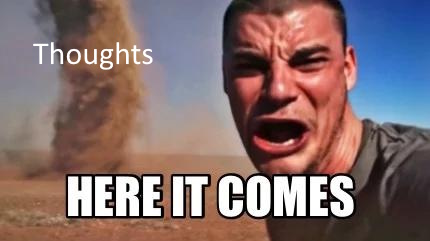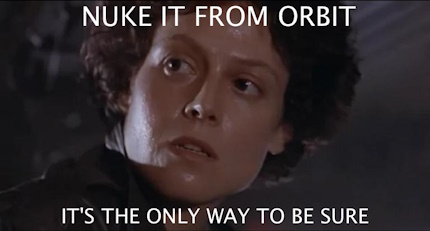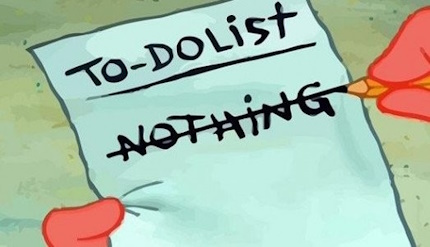Why this guide
Meditation is often frowned upon. ‘Mindfulness’ might seem like a woo-woo thing. It was for me at least, especially since I knew I would never reach ‘monk-level’. However, there was a time when I felt I had a ‘wrong’ mind state. Everything seemed okay on the surface, all seemed in control, but still… what was it, what was giving me that weird anxious feeling? I started trying out meditation using different guides and apps.
It didn’t seem to work for me. I noticed I drifted off too much, leading me to believe meditation was not for me. Until I embraced drifting off and setting a different goal.
The different goal
'Thinking of nothing' is not the goal. It is a means to an end. The real goal is to create peace of mind by creating an overview of what is cluttering your mind. Trying to think of ‘nothing’ is a way to get there.
Where and when to do it
You can meditate in any position: sitting in a chair, lying in bed, or standing in the shower. Just don’t meditate while driving though 😉
Duration
You don’t have to be a monk meditating for hours on end. Don’t make it a big thing and be happy with short sessions of a few minutes (even 2). It is better to do this more often in short sessions than to find that hour of free time, for which you will always find a better way to spend.
Find moments to meditate in your daily routine: when waiting for the bus, while trying to sleep, while showering, or when you are on the toilet. Do it instead of whipping out your phone every time.
How to do it
Breathing
Breathe through your nose if possible. That’s it basically. Don’t worry about deep or shallow, short or long breaths. It is what it is.
Keep your senses occupied:

- Hearing: Listen to your breathing.
- Touch: Feel your breathing. The air through your nose, your chest expanding and contracting.
- Smell: Well, you breathe through your nose. Check ✔️.
- Vision: Visualize your breathing.
- Taste: Nothing to do here.
By focussing on your breathing, you will think of nothing else. Well, not really in practice, so please keep on reading.
Relaxing your muscles
Once you can focus on your breath a bit, try to relax your muscles. This is harder than you might think.
Try to relax your feet, your knees, your lower back, your stomach, your shoulders, your neck, your jaws, your tongue, and the rest of your face. You might notice many muscles are tensed up by default.
Relaxing might actually feel awkward and uncomfortable, but that is okay.
Try to be still, but if you need to go to the toilet, go to the toilet. If you want to stretch, stretch. If you need to yawn, yawn. If you need to fart or burp, fart or burp. If you want to cry, cry. And write down the things you need to do, as described in the next section.
Help! Thoughts keep popping up!
Perfect! This is the important part. Your mind will drift away to different thoughts.

There are three kinds of thoughts your brain starts wandering off with:
- Memory-like thoughts: Acknowledge them as good or bad memories and push them away.
- To-do thoughts: Write them down immediately, get back to meditation, and then push that thought away, knowing it has been written down, so you won’t forget about it.
- Dreamlike thoughts: Think about these thoughts for a minute to figure out what they mean. Maybe there is something you should do. If not, enjoy the fact you had the thought and push it away. If yes, write it down like before and then push it away.
New thoughts will enter, and the same thoughts might come back. Let them come!
Push them away, and after writing stuff down more and more, the easier it becomes to acknowledge the thoughts and push them away. Write down your action points in a place that is easy to circle back to. I use a to-do app on my phone. You might scribble it on a piece of paper and copy them over to a whiteboard in your kitchen.
Try out what works best for you. Create a JIRA board for all I care.
Pushing away thoughts

Find a way for yourself to push away a thought after acknowledging it. I tend to smile at the fact I once again drifted off to some thought before waving it away to the distance. You might go Thanos on them or nuke them from orbit. See what works for you. Sometimes it is easy to think of nothing, focus on your breathing and muscles, and recognize that you wandered off with a thought. And sometimes it is hard. Either way is fine.
Now what about that list…
This is, in fact, a to-do list of things you ought to do because they are at the back of your mind keeping your brain busy. It can be all sorts of stuff.
Small things like:
- Fix the squeaky door
- Fill the small screw holes in the wall
- Go see that movie
Bigger things like:
- Clean up the garden
- Start buying some bitcoin
- Writing this guide

Or more impactful things:
- Start working out for real this time
- Tell your significant other the truth about something
- Ask for that well-deserved pay raise
Start acting and cross the items off the list. Don't set the bar too high though. You can be happy with one a week or one a month even. There might be action points to only acknowledge and decide not to act upon. This is something you will choose not to do.
Even though you probably should do them, but I am no life coach.
Being conscious about this choice is still better than being unconscious about it. And only writing them down will also create more peace of mind.
Also, add to the list when you are not meditating. You might be walking up the stairs and find yourself irritated again by the loose railing.
Conclusion
Write it down, get it out of the way, be less cluttered, feel better.